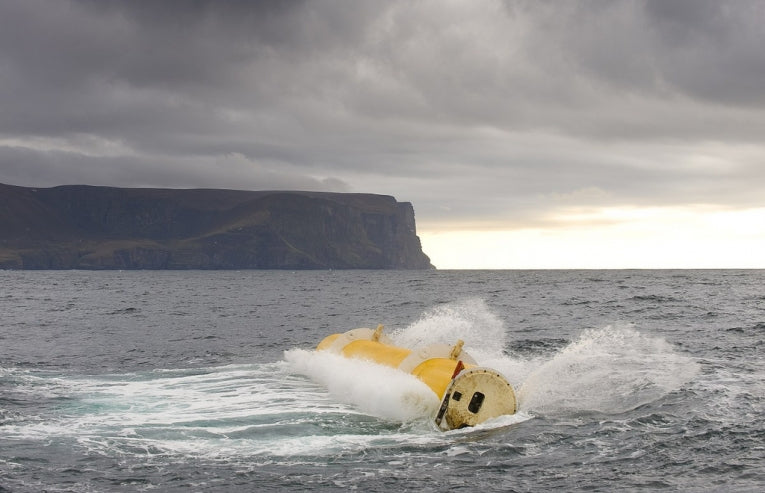The first row of next-generation nearshore wave power units has been approved in Scotland. The array (a systematic row or column) of three commercial Oyster units will each generate up to 800 Kilowatts of power for the National Grid - enough power for over 1,000 homes.
Two new Oyster wave converters will join a similar unit that was installed last September at Orkney's European Marine Energy Centre and connected to the onshore hydroelectric plant.
Fergus Ewing, Scotland's Energy Minster, says, "I am delighted to grant consent to these two new Oyster devices, the first nearshore wave array in Scotland to feed in to the National Grid.
"This array will supply more than one-thousand homes with clean energy, and should the demonstrator be successful the technology being developed here will power hundreds of thousands more homes in future.
"Scotland has unparalleled natural resources, with a tenth of Europe's wave power, and these new devices will help us to fully harness the huge energy resources around our own coast and contribute to global efforts to expand clean, green electricity generation.
"Scotland is in the midst of a renewables revolution, and it is innovation and creativity such as that behind the Oyster device which will help us meet our ambitious renewable electricity targets and help us reindustrialise Scotland."
The Oyster units, manufactured by Aquamarine Power, are part of a demonstration project. Permission has been granted, as long as an acceptable Environmental Monitoring and Mitigation Plan is put in place to make sure the environment in safeguarded.
Martin McAdam, Chief Executive Officer of Aquamarine Power, says, "This is great news - it is clear evidence Scotland is not only leading the way in marine energy technology, but shows that regulator Marine Scotland is putting in place the timely and efficient consent and permitting processes which will enable our industry to grow.
"This is a great milestone for our company and for the wave energy industry as a whole. This marks an important step in the development of Oyster which one day will be delivering power to hundreds of thousands of homes."
If the tests are successful, it provides opportunities for further wave energy projects, says Mr McAdam.
"It paves the way for us to continue working with Marine Scotland to further streamline the consents process and gain all the necessary consents for our 200MW commercial wave energy site in Orkney, and our 40MW site on Lewis."
The CEO says the company looks forward to working with the Orkney community on the responsible development of its first Oyster array.
WWF Scotland reacted positively to the announcement today. Dr Dan Barlow, Head of Policy for WWF Scotland said:
"Consent for Scotland's first wave energy array that will feed into the grid is an exciting step forward towards realising our huge marine energy potential.
"Scotland is well ahead of the game in developing wave power and this technology has the potential to be of global significance in our efforts to tackle climate change and offers huge export benefits too.
"Alongside energy saving measures, marine renewables will have a critical role to play in helping reduce climate emissions as we phase out polluting fossil fuels and nuclear power.
"With careful planning we can harness Scotland's wave and tidal energy to help cut our climate emissions, while safeguarding the nation's tremendous marine environment."
Oyster wave power device working; Video Credit: © Aquamarine Power










